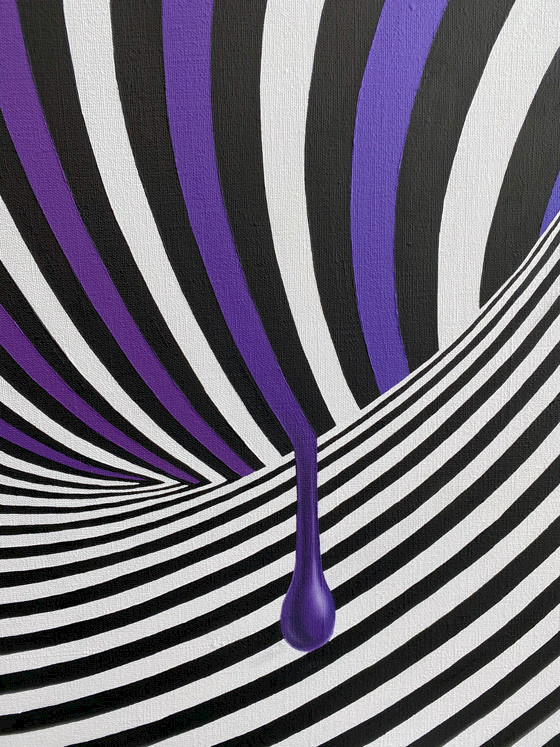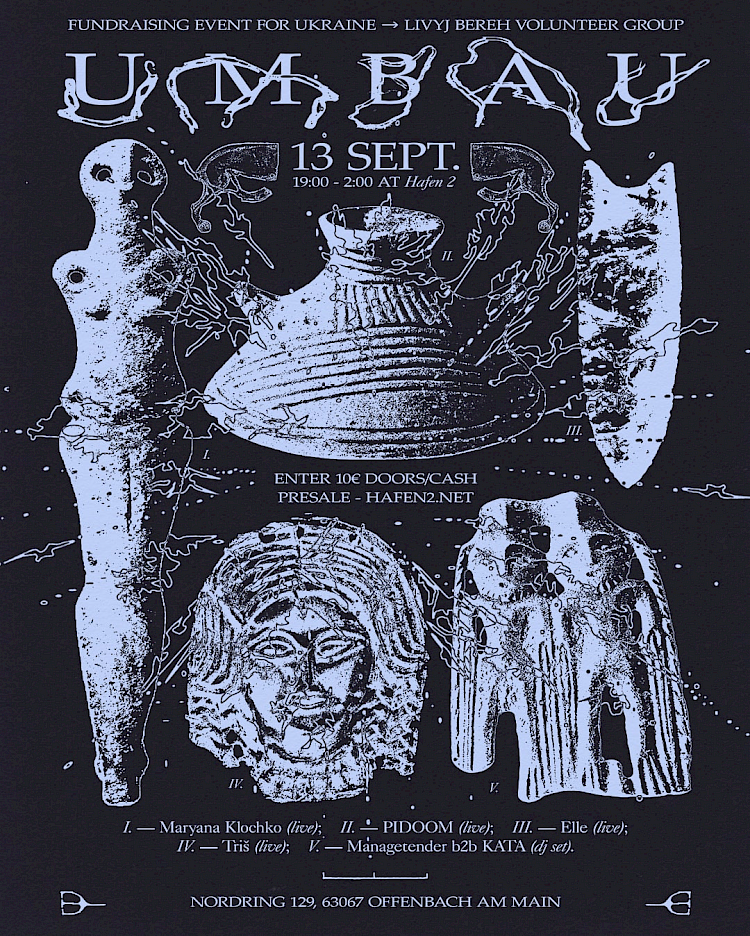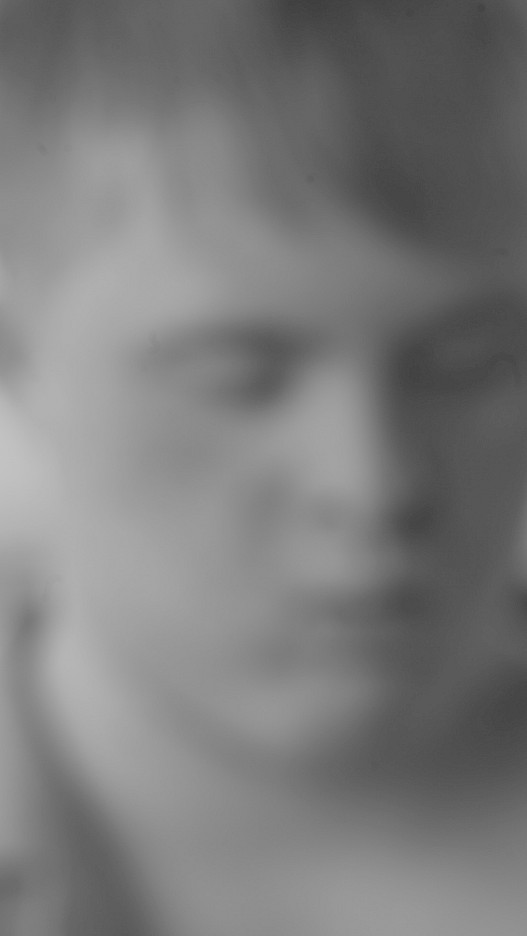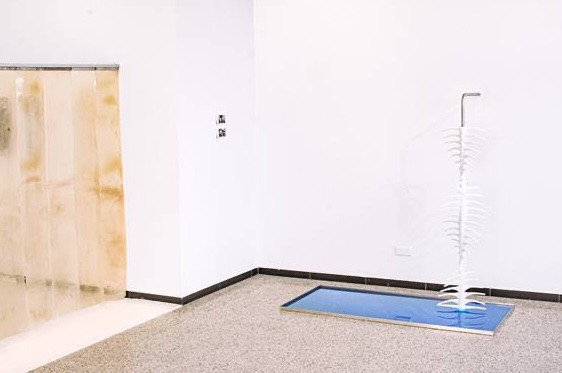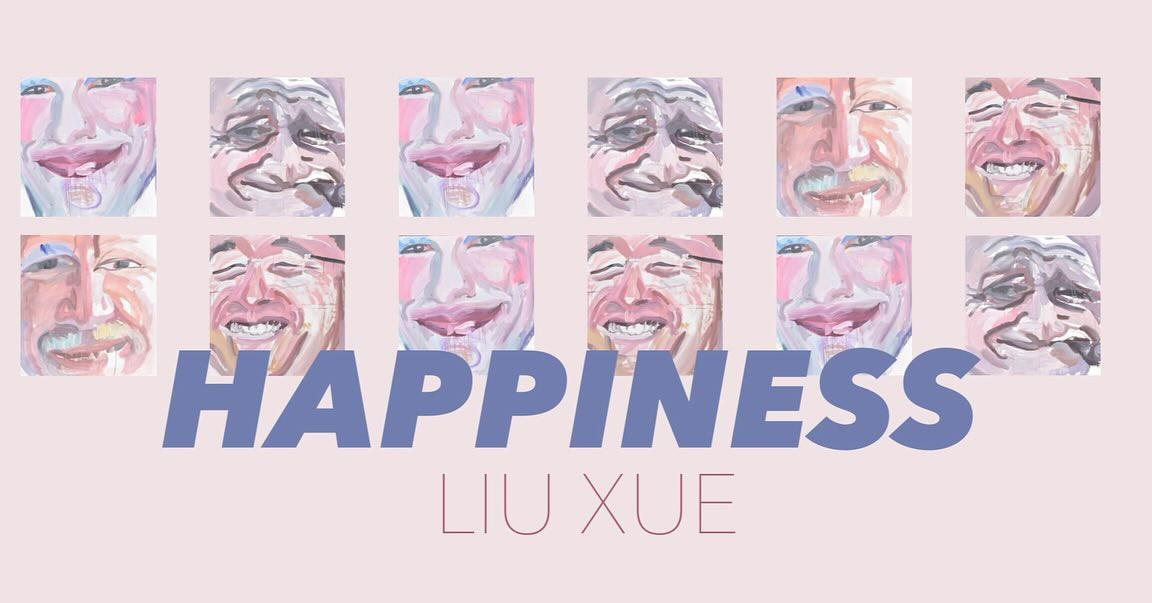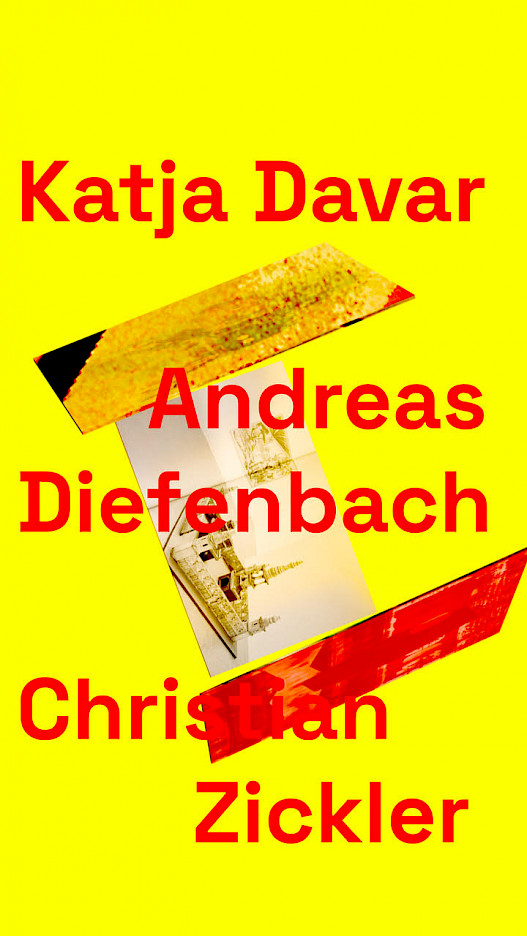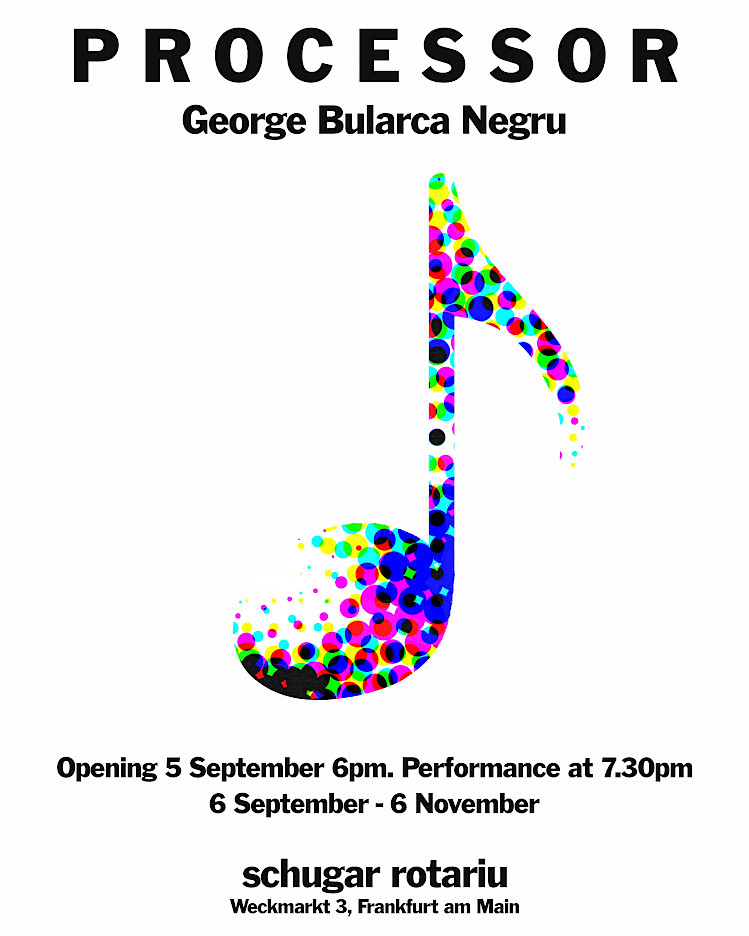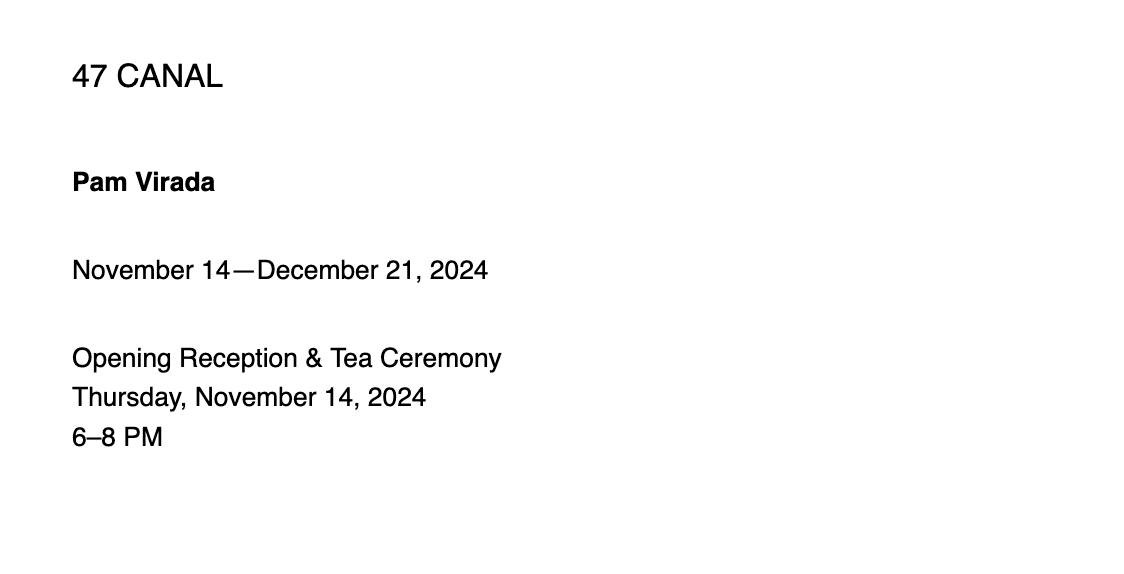Pam Virada
until December 21, 2024
47 CANAL
59 WOOSTER ST, 2ND FLOOR
NEW YORK, NY 10012
47 Canal is pleased to announce Silvering the Sky, the first U.S. presentation of Amsterdam-based artist Pam Virada. In her multidisciplinary practice, Virada creates objects, moving images, and installations that reference the cinematic and the spectral. Her works resonate with hauntologies of the Thai Chinese diaspora and beyond, recasting personal, historical, and fictive narratives to consider the shifting temporalities that construct individual and collective memory. The exhibition will be installed in the gallery’s project space and will be activated by Virada’s performance One to dampen the air, another to collect the stale (2024), a tea ceremony that will take place on the evening of Thursday, November 14th. Across the installation for Silvering the Sky, Virada takes cues from the Japanese director Yasujiro Ozu (1903–1963), whose best-known films usually center the domestic interior as a site to explore quotidian family dramas. His signature direction, repeat casting, and formal innovation resulted in stories that subtly reveal the clefts between values of traditional Confucianism and those of a rapidly modernizing postwar Japan. In this exhibition, poetic observations of these generational and often gendered tensions, and of the fluid expansion of nonlinear time reverberate throughout. Virada’s works connect loose patterns of human experiences that speak to returning pangs of nostalgia and the creation of memories—systems as cyclical and as elusive as the weather. Here, Virada focuses on Ozu’s female characters particularly from Late Spring (1949), Early Summer (1951), Late Autumn (1960), and The End of Summer (1961), which in concert invoke a full cycle of seasons while reflecting the invented familial dynamics recurring in the filmmaker’s vast cinematic universe. She etches stills from these four films by Ozu onto the surfaces of silver-toned serving trays, repurposing these platters as supports for wall-mounted candle sconces. In these works, Virada engages especially with “Noriko,” who is portrayed by Setsuko Hara as distinct, unrelated characters in Late Spring and Early Summer, while in The End of Summer, Yoko Tsukasa appears as another Noriko. The two actresses then reunite in Late Autumn as the matriarch Akiko and her daughter Ayako. With each return, the prismatic role of Noriko deepens over generational lines and
spotlights the continuity of Ozu’s mother-daughter relations across disparate storylines.
As the tapers burn, the resulting flames scorch the sconces with their dancing flickers and illuminate these finely rendered scenes while mirroring the surrounding environment. The platters are reappropriated into fixtures that once again serve the domestic sphere, suggesting the possibility of other fates for the female protagonists as their images are further enlivened by the candles’ glow. The sconces serve as the primary light source in the exhibition space, and they are complemented by works from Virada’s Descendant (spine x) series (2021–ongoing). The spines are a vital element in Virada’s exploration of feng shui, the practice of arranging sites and structures, and the objects and spaces within them. Comprising strands of beads that are suspended from ceiling to floor, these loosely columnar “spines” seem to provide the wisp of bearing, as threadlike vertebrae providing upright support to a frame. Yet the translucent backbones conversely mimic liquid pouring forth as their ends terminate into unfilled glasses, their delicate materials responding to the spatial movements and atmospheric vibrations that encircle them. To inaugurate the exhibition, Virada invites the intimacy of everyday domestic rituals through a participatory performance that implicates herself and the audience. The score for One to dampen the air, another to collect the stale details a gesture of hospitality: Three Horses Brand tea, boiled with pandan leaves, is served to opening attendees who are instructed to leave their emptied glasses throughout the exhibition space, “wherever it feels right.” Three Horses Brand is a company that was established in 1937 after the founder relocated to Thailand from China to avoid political tensions, and their strong loose-leaf teas are often brewed in Thai Chinese homes and placed as offerings on family altars—including the artist’s own. A tropical plant from Southeast Asia that is woven into baskets and rugs or used to flavor food, pandan is steeped with the tea to suffuse the gallery with its sweet and grassy perfume. The drinking vessels, which will remain in the space for the duration of the exhibition, and the lingering scent together with Virada’s sconces and spines impart the ghostly aura of a festive congregation that has already passed in time.
Pam Virada (b. 1993 Bangkok, Thailand) lives and works in Amsterdam, NL. She explores intersections between the cinematic and temporal through mixed-media installations and moving images. Recent solo and duo presentations include Liste Art Fair with Nova Contemporary, Basel, CH (2024); “A
Trick of Light,” Meno Avilys, Vilnius, LT (2023); and “The Mirror,” Merten Frames Project Space, Amsterdam, NL (2021). Her work has been included in exhibitions at Kunst Raum Mitte, Berlin, DE (2024); de Appel, Amsterdam, NL (2024); Aranya Art Center, Qinhuangdao, CN (2023); and Nova
Contemporary, Bangkok, TH (2023), among others. She was a recent resident at Rupert Residency in 2023.
